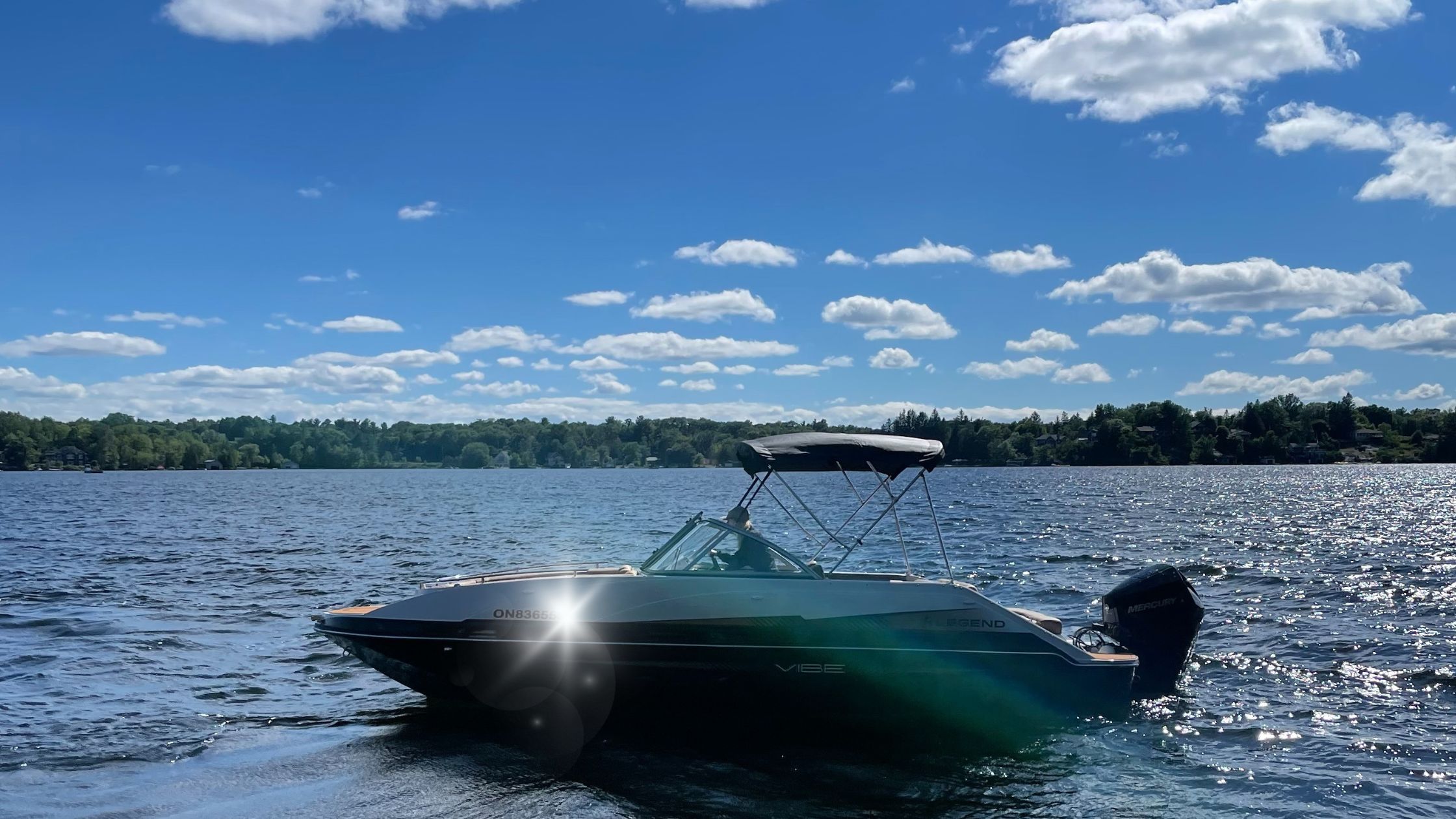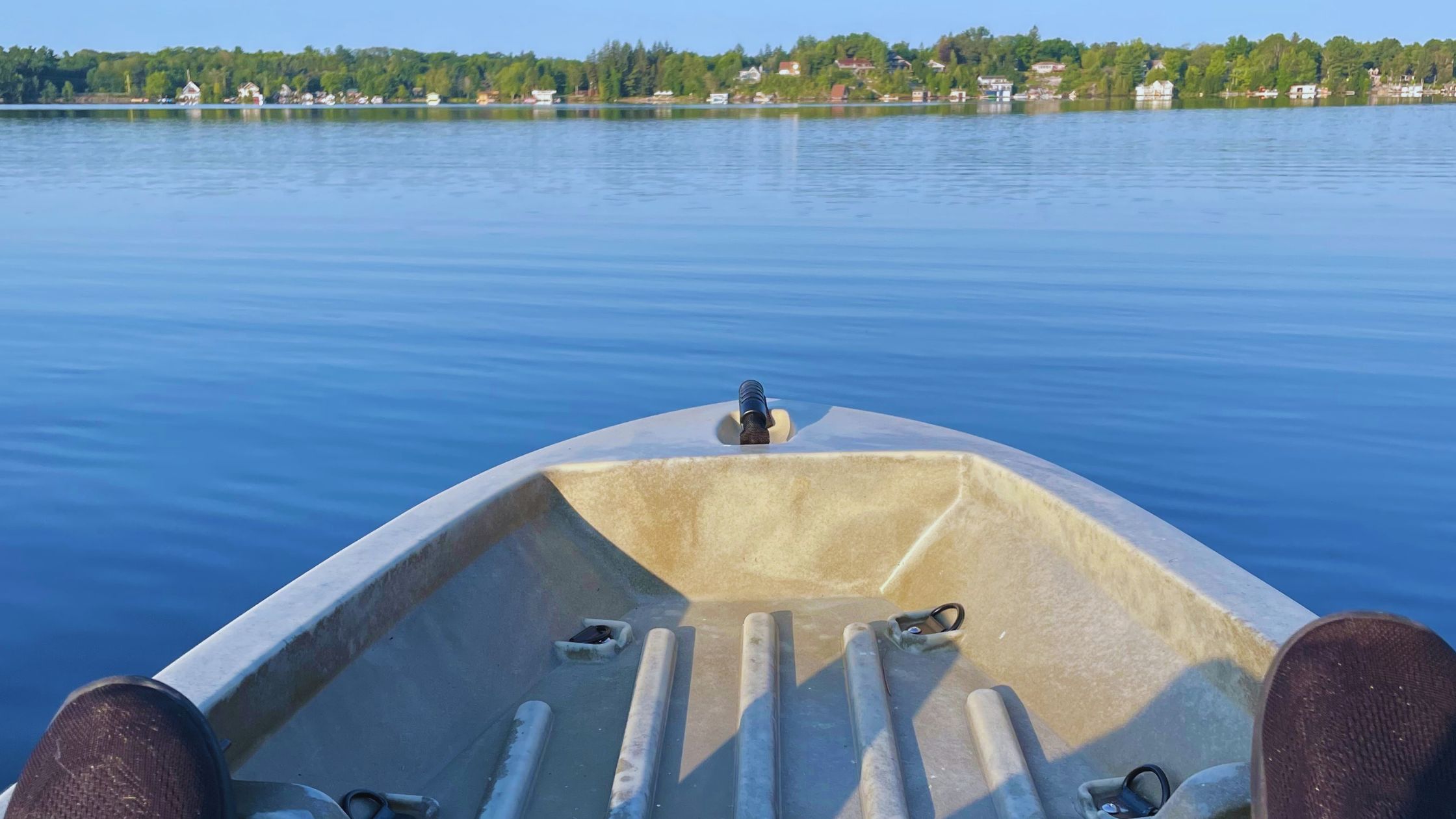Understanding Kayak Types
Choosing the right kayak feels a bit like finding a needle in a haystack, doesn’t it? But once you understand the different kayak types and their specific uses, the haystack gets a whole lot smaller. Let us walk you through the various options to find your paddling match!
Recreational Kayaks
Recreational kayaks are your go-to for a leisurely day on the water. They’re stable, easy to maneuver, and perfect for calm lakes and rivers. With a wider hull, these kayaks forgive a rookie’s wobbly paddle strokes. Brands like Old Town Canoes & Kayaks and Ocean Kayak offer great options that can transform a beginner into a confident paddler.
- Primary use: Calm waters, photography, wildlife watching
- Typical features: Large cockpit for easy entry, comfortable seating, storage space
- Examples: Old Town Vapor 12XT, Ocean Kayak Malibu Two
Touring Kayaks
For the long-distance paddlers among us, touring kayaks, also known as sea kayaks, are a dream. Designed for speed and efficiency, they slice through open water and handle well in diverse conditions. Brands like Necky and Wilderness Systems create touring models that can make coastal exploration a breeze.
- Primary use: Multi-day trips, large bodies of water, expedition
- Typical features: Narrow hull for speed, storage hatches, lower profile to reduce wind effect
- Examples: Necky Eskia, Wilderness Systems Tsunami
Sit-On-Top vs. Sit-Inside Kayaks
The debate between sit-on-top versus sit-inside kayaks is a hot one. If you want to hop in and out of the water easily (think snorkeling or diving), a sit-on-top is the best pick. It’s also self-draining – a plus for beginners. Hobie and Perception Kayaks have durable options that often include rod holders, making them suitable for fishing too.
On the other hand, when you seek shelter from the elements or want that traditional kayaking feel, you should go for sit-inside models. Companies like Dagger Kayaks have some sleek sit-inside kayaks ideal for cooler environments when you want to stay dry.
- Sit-On-Top Kayaks: Self-draining, easier entry, commonly used for fishing
- Sit-Inside Kayaks: Better protection from the elements, traditional design
- Brand Examples: Hobie Mirage, Perception Pescador, Dagger Axis
Specialized Kayaks
The world of specialized kayaks is fascinating. If you’re craving a rush, grab a whitewater kayak like the ones from Pyranha to handle those rapids. Or if convenience is more your style, look at inflatable kayaks or folding kayaks – brands like Advanced Elements have models that pack into a backpack. And for the companionship of a paddling partner, tandem kayaks provide twice the fun and the challenge.
- Whitewater Kayak: Built for agility in rapids
- Inflatable/Folding Kayaks: Portable and storage-friendly
- Tandem Kayaks: Designed for two paddlers
- Examples: Pyranha Fusion II, Advanced Elements AdvancedFrame, Hobie Mirage Compass Tandem
Selecting the Right Size and Shape
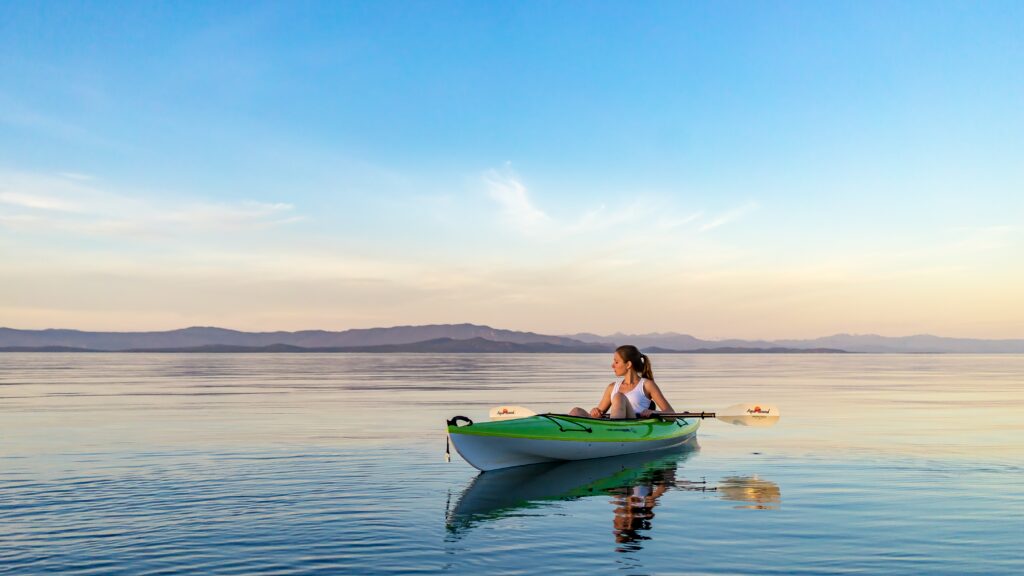
When you’re on the for a kayak, keep a keen eye on the kayak’s size and shape—crucial factors for stability and performance.
Kayak Length and Width
The length and width (or beam) of a kayak dramatically influence its tracking (ability to stay straight on course) and maneuverability. Shorter kayaks, which generally run less than 10 feet, are nimbler and better for twisty streams. In contrast, longer kayaks (over 12 feet) excel in straight-line tracking and are typically faster. The width affects stability; wider kayaks tend to be more stable and can be a reassuring choice for beginners or for those using the kayak for fishing or photography.
| Kayak Type | Length | Width | Best for |
|---|---|---|---|
| Recreational | Under 12 feet | 27-30 inches | Lakes, calm rivers |
| Touring | 12-16 feet | 22-25 inches | Long-distance trips |
| Performance | Over 16 feet | 19-22 inches | Speed and efficiency |
Hull Type and Kayak Stability
Kayak stability is split into two types: primary stability and secondary stability, reflecting the vessel’s steadiness on calm water and its ability to stay upright in rough conditions, respectively. The hull type plays a pivotal role in stability:
- Flat hulls are common on recreational kayaks and offer good initial stability. They’re perfect for calm waters and beginners.
- V-shaped hulls slice through water and offer better tracking. They have good secondary stability but might feel tippy to some paddlers.
- Rounded hulls provide an in-between option with efficient water displacement and agility.
Most kayaks also have a defined chine, which refers to the kayak’s edge where the bottom meets the side. Hard chines give better secondary stability and edging, favorable for more experienced paddlers, while soft chines offer smoother transitions and are generally more forgiving.
Considerations for Comfort and Capacity
Cockpit and Seat Features
You should like of your kayak’s cockpit as your command center. Comfort here is crucial. The seat should support your back with ample padding and allow for adjustments. Take for example the Wilderness Systems Pungo series, known for their Phase 3 AirPro seating – adjustable, cushioned, and breathable.
- Adjustability: Look for seats that adjust for an absolute custom fit.
- Padding: A padded seat and backrest save your back during long trips.
Weight Capacity and Storage
A kayak’s weight capacity is its total load limit, including you and your equipment.
Storage options vary. Some kayaks come with waterproof compartments, like the Hobie Mirage Outback’s hatch areas, perfect for keeping valuables dry. Meanwhile, models like the Perception Pescador Pro offer open storage with bungee cords which is handy for items you need within reach.
- Maximum Weight Capacity: Ensure it’s above your and your gear’s combined weight.
- Storage: Check for dry hatches and tank wells with secure bungee systems.
Materials and Construction

When you’re on the hunt for a kayak, knowing your stuff about materials and construction can make or break your decision. Would you opt for lightweight speed or steadfast durability? Let’s find out.
Common Kayak Materials
You’ve heard of Fiberglass and Plastic kayaks, right? They’re pretty popular. But let’s dig in a bit deeper:
- Fiberglass: A go-to for a pleasant balance of weight and strength. However, bump into too many rocks, and it might start showing some wear and tear.
- Plastic: Usually polyethylene, these kayaks are the tough guys on the block. However, they’re heavier, so if you’re planning to haul this on your car, you might need an extra set of muscles.
- Kevlar: Much like what’s used in bulletproof vests (fancy, right?), makes kayaks both light and sturdy, but your wallet won’t be too thrilled.
- Composite materials: Can include combinations of Fiberglass, Kevlar, and sometimes Carbon Fiber. These kayaks are often the cream of the crop, boasting great performance and lighter weights. But again, they can get pricey.
If you’re curious about brands, TAHE and their SUP-YAK inflatables are a neat innovation. A kayak meets a paddleboard, suitable for both solo and tandem adventures.
Durability and Weight Considerations
- Durability: If you’re a novice, lean towards plastic. Bumps and scrapes? Plastic acts like they’re no biggie. For long-haul paddlers, though, a composite kayak could be a worthy investment. Lasts longer, fewer repairs needed.
- Weight: If portability is your main concern, fiberglass or a composite kayak lightens the load.
Keep these points in mind, and picking out your next kayak will be a smooth sail.
Kayak Features and Accessories
When it comes to kayaking, the right features and accessories can make all the difference. Let’s dive into the must-haves and the nice-to-haves that can elevate your experience.
Essential Kayaking Equipment
A well-designed boat is key. Kayak design can vary widely, from sleek models engineered for speed to wider ones meant for stability. When it comes to tracking, or how well a kayak maintains a straight line, features like a rudder or skeg can really help, especially if you’re dealing with crosswinds or currents. The rudder, controlled by foot pedals, literally steers the kayak, while the skeg is a dropdown fin that helps keep you on course.
- Paddle: A lightweight yet sturdy paddle prevents arm fatigue without breaking mid-journey.
- Spray Skirt: For those chillier waters or rougher rides, you should choose a kayak with a cockpit that can fit a spray skirt to keep you dry.
Enhancements and Convenience Options
Who doesn’t love those extra bells and whistles? They might not be critical to the kayak’s function, but they sure can make your trip more enjoyable.
- Storage: Whether it’s a simple bungee cord system or a watertight compartment, ample storage lets you carry snacks, extra gear, or even camping equipment for overnight trips.
- Rod Holders/Accessory Rails: For the fishing enthusiasts or gear heads, having these integrated into the kayak design is a big plus.
It’s worth noting that extra features might increase the price, things like a cup holder can make your kayaking experience feel luxurious.
Kayaking Performance Factors
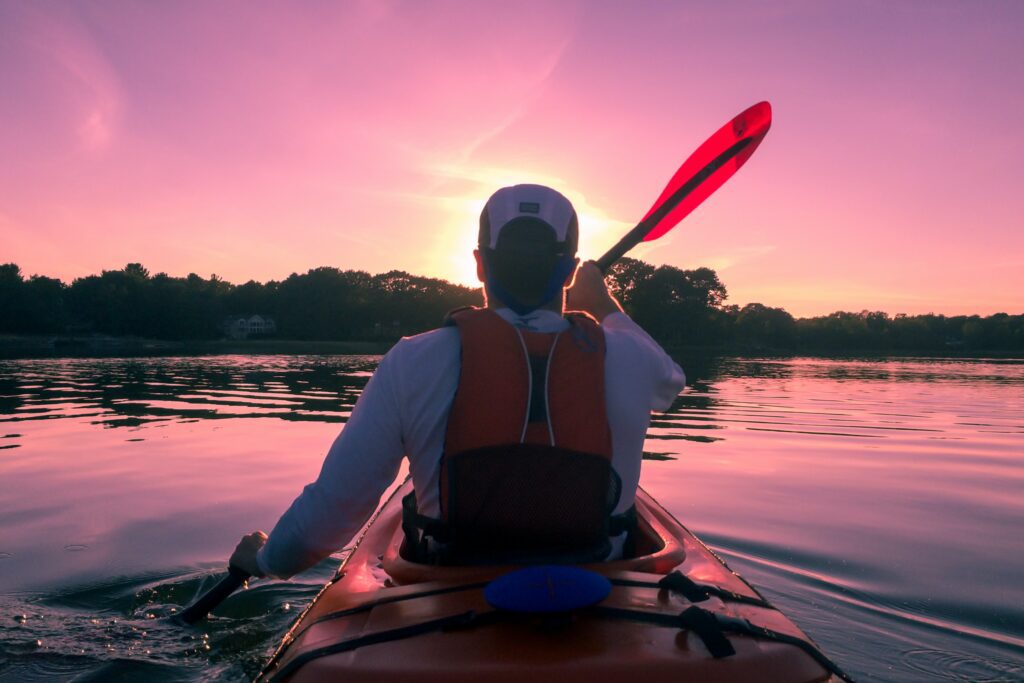
Speed and Maneuverability
You’ve probably noticed that speed and maneuverability oftentimes balance each other out. Generally:
- Shorter kayaks: They’re the go-to for quick turns.
- Longer kayaks: These beauties, often over 12 feet, cut through the water with less effort, maintaining great glide and tracking.
Handling in Different Environments
- Calm conditions: A wider kayak feels more sturdy on a quiet pond or placid lake. Less wind, less boat traffic, pure zen.
- Rough waters: In contrast, a sit-on-top model like the Ocean Kayak Malibu Two performs well when it’s wavy.
Paddling Locations and Activities
When choosing the right kayak, consider where and how you’ll use it—each environment calls for specific kayak features.
Best Kayaks for Rivers and Lakes
Rivers and lakes are a paddler’s paradise, especially when you have a kayak that matches the water conditions. For smooth lake surfaces, you’ll want a kayak with good tracking, like the TAHE 10’6 for solo adventures or its larger 11’6 version for tandem trips. These versatile sit-on-top kayaks provide stability and are great for leisurely paddling or swimming breaks with the kids. If tackling a river’s current, look for a kayak with a durable hull and responsive handling to navigate through rapids or around obstacles effortlessly.
Ocean and Sea Kayaking Preferences
Saltwater calls for a kayak equipped to handle the ocean’s unpredictable nature. Strong currents and winds require a kayak with excellent stability and straight-line tracking—features found in sea kayaks designed for open waters. Look for options like the Ocean Kayak Malibu Two, which offers a comfortable ride for beachside camping excursions or a day paddling around bay areas. Its robust construction handles the sea’s challenges, while ample storage makes it ideal for ocean fishing.
Kayaks for Fishing and Camping
If fishing and camping are on your agenda, a kayak with maximum stability, storage, and comfort is a must. Sit-on-top kayaks, often wider and more stable, are perfect for these activities. The Perception Pescador Pro series, for example, offers spacious gear storage and a comfortable seat, making it a top pick for anglers and campers alike. When venturing out on waterways for an overnight stay, storage hatches for camping gear and fishing equipment are indispensable. The stability needed to reel in a fish, combined with the comfort required for longer journeys, defines the ideal fishing and camping kayak.
Choosing a Kayak for Your Skill Level

Selecting a kayak that aligns with your experience ensures both enjoyment and safety on the water.
Best Kayaks for Beginners
If you’re just dipping your toes into the world of kayaking, don’t worry, we’ve got you covered! Stability is your best friend here. You’ll want a wider kayak; these generally offer a comforting steadiness which is great for building up your paddling skills.
- Sit-on-top Kayaks: Super user-friendly, great for leisurely day trips and they make it easier to get back on if you happen to take a dip.
- Recreational Kayaks: Typically 10-12 feet long and the cockpit is roomy, making them suitable for taller paddlers.
Recreational kayaks are often perfect for calm waters like ponds or lakes. Think of models like the Old Town Canoe Vapor 10 or the Sun Dolphin Aruba 10, which won’t give your wallet a heart attack and still provide plenty of enjoyment.
Features for Experienced Paddlers
Now, if you’ve already been around the kayak block a few times, you’re likely after something that can keep up with your advanced paddling dance. You know the strokes, you’ve got the agility, and maybe you’re ready for something a little more challenging than a leisurely paddle.
- Touring Kayaks: Sleeker and longer than recreational ones, they slice through water more effectively for longer expeditions.
- Key features: Adjustable footpegs and thigh braces for a customized fit, which is ideal especially if you’re taller.
- Sea Kayaks: Designed for open waters and can often handle rougher conditions.
- Brands to consider: Look at the Necky Looksha or the Delta Kayaks 17, renowned for performance and durability.
Whether you’re a beginner just starting out or you’re looking to upgrade to something that keeps pace with your skills, remember to consider kayak length, width, and features to find your perfect match on the water.
Most Popular Kayak Brands
Have you ever wondered what kayak brands seasoned paddlers trust? Let’s dive in and explore!
- West Coast Wonders: Brands like Delta and Seaward are the go-to for high-volume, coastal cruisers. They’re known for spacious hatches perfect for those long, gear-heavy trips.
- Whitewater Heritage: If you’re looking to tackle some rapids, you might look at what Dagger and Jackson Adventures have to offer.
- Heavy-Duty Contenders: Now, if you’re eyeing something robust, the Jackson Staxx, Tarpon, and Pungo are praised for their solid design. Plus, convenient side handles make them a breeze to transport.
Picking the right brand is crucial—it’s the difference between fighting the waves and riding them like a pro. So go ahead, take your pick, and let the adventures begin!
Frequently Asked Questions
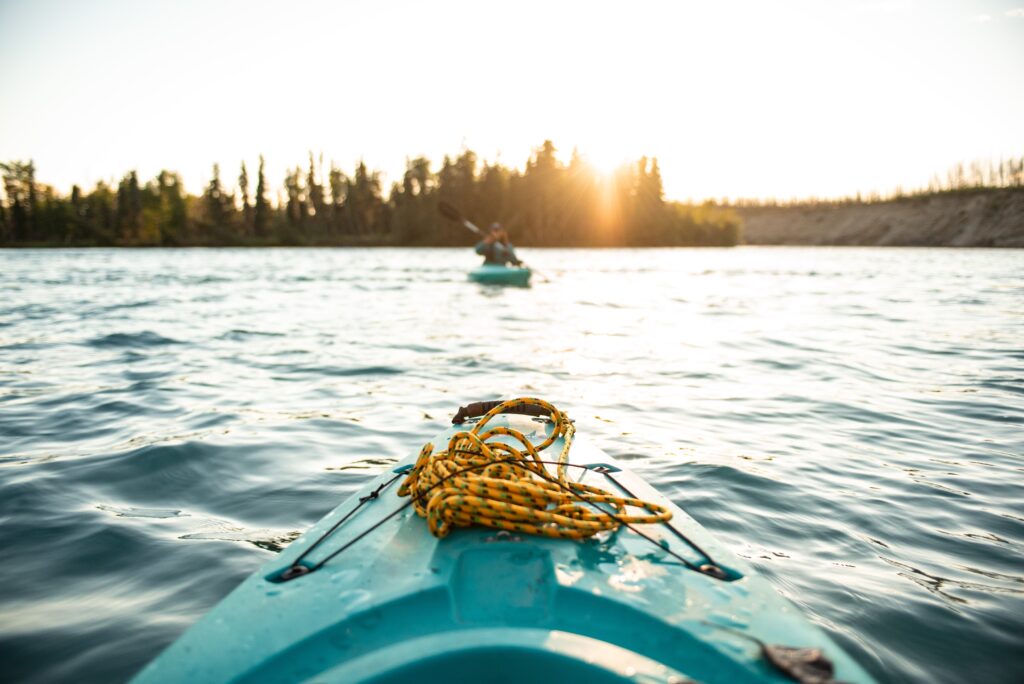
Choosing the right kayak involves considering your personal needs, the environments you’ll be exploring, and the specific features that suit your kayaking style.
How do you choose the perfect kayak for your adventures?
For the perfect kayak, I weigh my skill level against where I’ll be paddling. A calm lake calls for a different vessel than coastal waters. The frequency of my trips and the kayak’s storage features also play a big role.
What key factors determine the best kayak size for your needs?
Kayak size hinges on two things: my size and my gear. Ample legroom and weight capacity for safety are crucial, while the kayak’s length affects speed and maneuverability. I always ensure there’s enough space for my essentials without compromising the kayak’s performance.
Can you recommend some top-rated kayaks for recreational use?
Sure! For recreational use, I lean towards models like the Wilderness Systems Pungo for its comfort, or the Old Town Canoes & Kayaks’ Vapor 10 for its stability. Jackson Kayaks also offer versatile choices that often receive glowing reviews.
What are the pros and cons of a sit-on-top kayak compared to traditional models?
A sit-on-top kayak means I can hop on and off easily, which is great for swimming. They’re generally more stable, but also heavier, which may matter if I’m frequently loading and unloading. Traditional kayaks offer better protection against the elements but can feel constricting for some.
Which kayak brands stand out in the market for quality and reliability?
In the kayak world, brands like Hobie and Dagger have a solid reputation for quality. Perception Kayaks are renowned for their durability, too, which is something I always consider when I’m on the lookout for reliability.
What common kayaking mistakes should beginners be aware of and avoid?
Beginners often underestimate the importance of a proper paddle size or forget to check the weather and water conditions. I always remind my newbie friends to dress for the water temperature, not the air, and to practice re-entry techniques in case of a capsize. It’s these little things that keep the adventure enjoyable and safe.



